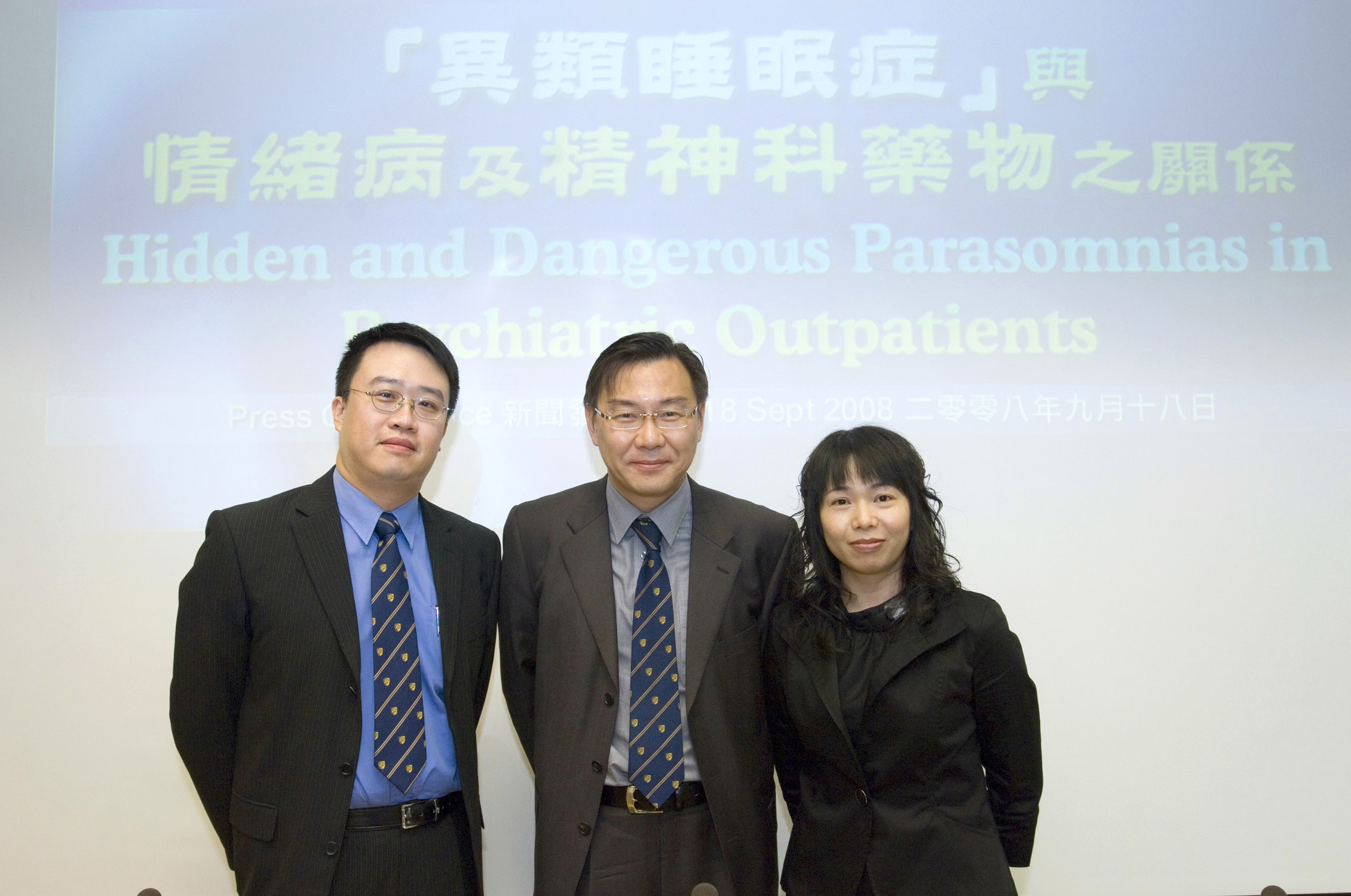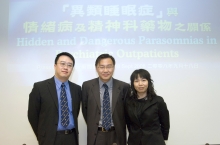CUHK
News Centre
Hidden and Dangerous Parasomnias in Psychiatric Outpatients
Sleep complaints are common among patients suffering from mental illness. Parasomnia is a group of sleep disorders that could manifest as sleepwalking, movement and other complex activities during sleep with consequent sleep disruptions and sleep related injuries.
The Department of Psychiatry at The Chinese University of Hong Kong (CUHK) conducted a clinical epidemiological study in the Li Ka Shing Specialist Clinic of Prince of Wales Hospital on 1,200 psychiatric outpatients from 2006 to 2007. The study investigated the prevalence rate and the associated factors of some movement-related parasomnias in patients with psychiatric illnesses, including sleepwalking, sleep related eating disorder (SRED), REM sleep behavioral disorder (RSBD) and sleep related injuries. The result of this study was recently published in Journal of Clinical Psychiatry.
The study found that the lifetime prevalence rate of these parasomnias ranged from 4.0% to 8.5% in the psychiatric outpatients. In fact, most of the patients were not fully aware of the attacks or did not reveal the problems to their doctors. Some of them reported adverse outcomes including sleep related injuries and violence to themselves and bed-partners, weight gain and dangerous activities like cooking under impaired consciousness. Depressive illness, concurrent sleep disturbances like insomnia, snoring and recurrent nightmares, some antidepressants and hypnotics were found to be associated with these parasomnias. Among various psychiatric medications, newer antidepressants (Selective Serotonin Reuptake Inhibitor, SSRI) were associated with increased prevalence of RSBD and 1 out of 20 patients taking SSRI might develop such condition. For SRED, 1 out of 7 subjects taking the hypnotics (Zolpidem) regularly might experience sleep related eating behavior.
Although these parasomnias were shown to be associated with depression and certain psychiatric medications, the exact aetiologies were complex and direct causal relationship had not yet been fully established. Early detection and appropriate investigations would be needed for those who were suspected to have such conditions. Interventions including optimization of underlying mental illnesses, change of drug regime and home safety could modify these conditions and reduce risk of sleep related injuries and other undesirable consequences.
|
Characteristics of various parasomnias |
|||
|
|
|
|
|
|
A. |
Sleepwalking |
||
|
|
1. |
Ambulation during sleep |
|
|
|
2. |
Altered state of consciousness |
|
|
|
3. |
Difficulty in arousing the person, mental confusion when awakened, amnesia (complete or partial), dangerous or potentially dangerous behavior |
|
|
|
|
|
|
|
B. |
Sleep related eating disorder |
||
|
|
1. |
Recurrent episodes of involuntary eating and drinking during sleep |
|
|
|
2. |
Other features include: |
|
|
|
|
i) |
Consumption of peculiar forms or combinations of food |
|
|
|
ii) |
Sleep disruption |
|
|
|
iii) |
Dangerous behavior or injury while in pursuit of food or cooking food |
|
|
|
iv) |
Weight gain |
|
|
3. |
Altered state of consciousness |
|
|
|
|
|
|
|
C. |
REM sleep behavioral disorder |
||
|
|
1. |
Parasomnia during REM sleep |
|
|
|
2. |
Limb or body movement associated with dream mentation |
|
|
|
3. |
Complaint of violent or injurious behavior during sleep |
|





